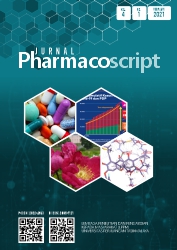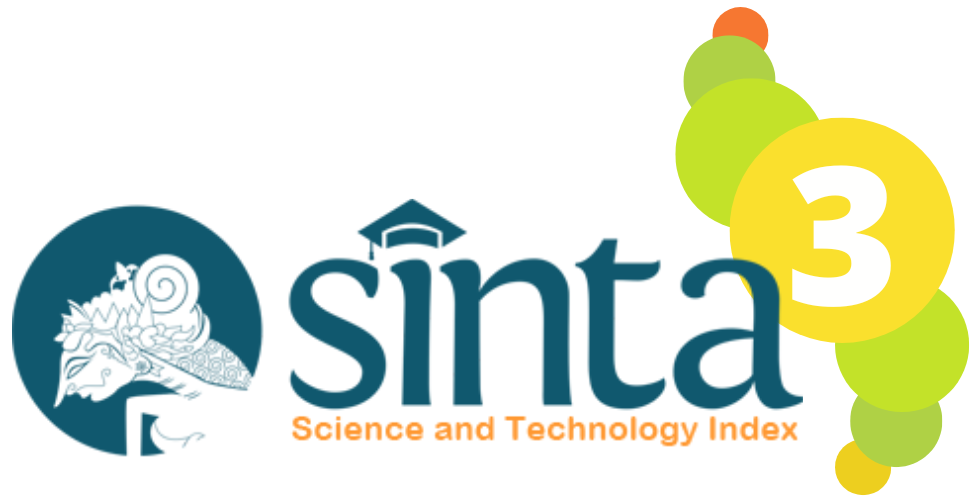PENGARUH BUAH OKRA (Abelmoschus esculantus)TERHADAP INSULIN C-PEPTIDA TIKUS PUTIH WISTAR (Rattus norvegicus) DIABETES YANG DIINDUKSI DENGAN STREPTOZOTOCIN
DOI:
https://doi.org/10.36423/pharmacoscript.v4i1.647Keywords:
Diabetes, ECLIA, insulin, c-peptida, streptozotosinAbstract
Kejadian diabetes mellitus diakibatkan oleh beberapa faktor risiko baik itu yang bisa dikendalikan maupun yang tidak bisa dikendalikan. Usaha pengendalian bisa dilakukan baik secara farmakologi atau nonfarmakologi. Tatalaksana pengobatan diabetes mellitus tipe 2 dimaksudkan untuk mengembalikan fungsi sel beta pankreas dalam mengsekresikan insulin serta meningkatkan sensitivitas reseptor insulin pada sel. Sedangkan untuk tatalaksana nonfarmakologi umumnya dilakukan dengan mengkonsumsi bahan yang dapat menekan faktor pencetus kejadian tersebut. Okra (Abelmoschus esculentus) merupakan tanaman yang secara empiris telah terbukti dapat digunakan untuk mengendalikan penyakit diabetes mellitus, namun pembuktian secara ilmiah dari efektivitas tanaman ini masih sangat kurang. Oleh sebab itu, penelitian ini bertujuan untuk mendapatkan informasi terkait pengaruh ekstrak buah okra terhadap kadar insulin c-peptida dan kadar gula darah pada tikus diabetes mellitus yang diinduksi dengan streptozotosin intraperitoneal dalam rentang waktu 25 hari. Kadar c-peptida diukur pada hari ke 25 dengan metode Electro Chemiluminesencent Immune Assay (ECLIA). Berdasarkan hasil penelitian yang diperoleh menunujukkan tidak adanya perbedaan yang bermakna pada kadar insulin c-peptida pada semua kelompok uji (0,01 ng/ml). Hasil yang mengesankan diperoleh bahwa okra kering memiliki efek lebih kuat dibandingkan metformin (p = 0,002), okra cair (p = 0,754), dan blangko (p = 0.01) dalam menurunkan kadar gula darah. Oleh sebab itu, dapat disimpulkan bahwa ekstrak okra baik kering (serbuk) atau cair dapat menurunkan kadar gula darah pada tikus DM yang diinduksi dengan streptozotosin.
References
Amin, Indah Mohd. 2011. “Nutritional Properties of Abelmoschus Esculentus as Remedy to Manage Diabetes Mellitus: A Literature Review.” In International Conference on Biomedical Engineering and Technology, IACSIT Press Singapore, 50–54.
Atlas, Diabetes. 2015. “International Diabetes Federation.” IDF Diabetes Atlas, 7th edn. Brussels, Belgium: International Diabetes Federation.
Ben-Chioma, A E, D G Tamuno-Emine, and D B Dan. 2015. “The Effect of Abelmoschus Esculentus in Alloxan-Induced Diabetic Wistar Rat.” International Journal of Science and Research; 4 (11): 540 543.
Chika, Nwachukwu Emmanuel. 2013. “Development of Protocol for in Vitro Regeneration in Abelmoscus Esculentus (L.) Moench (Okra) Through Shoot Apical Meristem, and Nutrient and Biochemical Composition of Its Leaves and Fruits.”
Esan, Adewale M, Kabo Masisi, Felix A Dada, and Charles O Olaiya. 2017. “Comparative Effects of Indole Acetic Acid and Salicylic Acid on Oxidative Stress Marker and Antioxidant Potential of Okra (Abelmoschus Esculentus) Fruit under Salinity Stress.” Scientia Horticulturae 216: 278–83.
Hassan, Hamza et al. 2019. “Autonomic and Enteric Function Profiling Can Predict Disordered Gastric Emptying in Diabetic Gastropathy.” Medical & Biological Engineering & Computing: 1–6.
Hinkle, Janice L, and Kerry H Cheever. 2018. Brunner and Suddarth’s Textbook of Medical-Surgical Nursing. Wolters kluwer india Pvt Ltd.
Downloads
Published
Issue
Section
License
Copyright (c) 2021 Asep Kuswandi

This work is licensed under a Creative Commons Attribution-ShareAlike 4.0 International License.
Authors who publish with this journal agree to the following terms:
- Authors retain copyright and grant the journal right of first publication, with the work [SPECIFY PERIOD OF TIME] after publication simultaneously licensed under a Creative Commons Attribution License that allows others to share the work with an acknowledgement of the work's authorship and initial publication in this journal.
- Authors are able to enter into separate, additional contractual arrangements for the non-exclusive distribution of the journal's published version of the work (e.g., post it to an institutional repository or publish it in a book), with an acknowledgement of its initial publication in this journal.
- Authors are permitted and encouraged to post their work online (e.g., in institutional repositories or on their website) prior to and during the submission process, as it can lead to productive exchanges, as well as earlier and greater citation of published work (See The Effect of Open Access).









